Search and Discovery
Master LitView’s semantic search capabilities to uncover research insights that traditional keyword search would miss. This guide covers advanced search strategies, cluster interpretation techniques, and systematic literature discovery methods.
Advanced Search Strategies
Building Effective Keyword Combinations
The Multi-Layer Approach
Structure your keywords in three layers for comprehensive coverage:
.png)
Core Concept (1-2 keywords)
- Your primary research focus
- Example: “machine learning”, “cancer treatment”
Methods and Approaches (2-3 keywords)
- How the research is conducted
- Example: “neural networks”, “clinical trials”, “meta-analysis”
Context and Application (1-2 keywords)
- Where or why the research applies
- Example: “medical diagnosis”, “drug discovery”, “patient outcomes”
Strategic Document Upload

Context Setting Documents
Upload 2-4 papers that represent:
- Foundational work in your field
- Methodological papers you want to build on
- Recent relevant publications in your research area
- Interdisciplinary connections you want to explore
Positioning Strategy
Your uploaded documents serve as “anchors” in the cluster map:
- Close clustering with search results indicates strong relevance
- Distant positioning may reveal unexpected research directions
- Bridge positions between clusters suggest interdisciplinary opportunities
Mastering Cluster Interpretation
Reading Research Landscapes
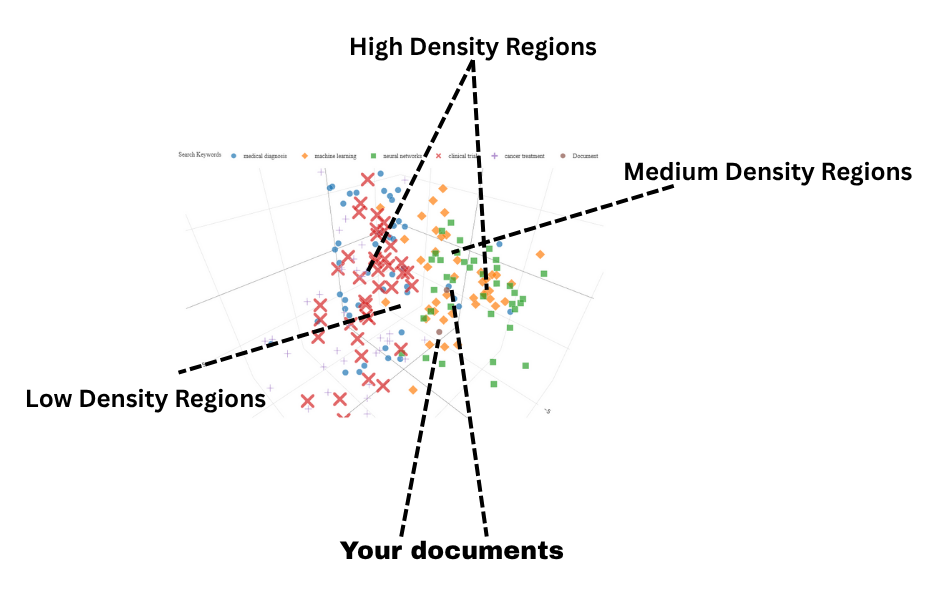
Cluster Density Analysis
High-Density Regions
- Established research areas with substantial literature
- Safe territory for building on existing work
- Good for systematic reviews and meta-analyses
Medium-Density Regions
- Active research areas with room for contribution
- Balance of foundation and opportunity
- Ideal for most research projects
Low-Density Regions
- Emerging topics or research gaps
- Higher risk but potentially higher impact
- Suitable for innovative or exploratory research
Keyword Relationship Patterns
Overlapping Clusters (High Value)
[Keyword A] ∩ [Keyword B] = Research sweet spot
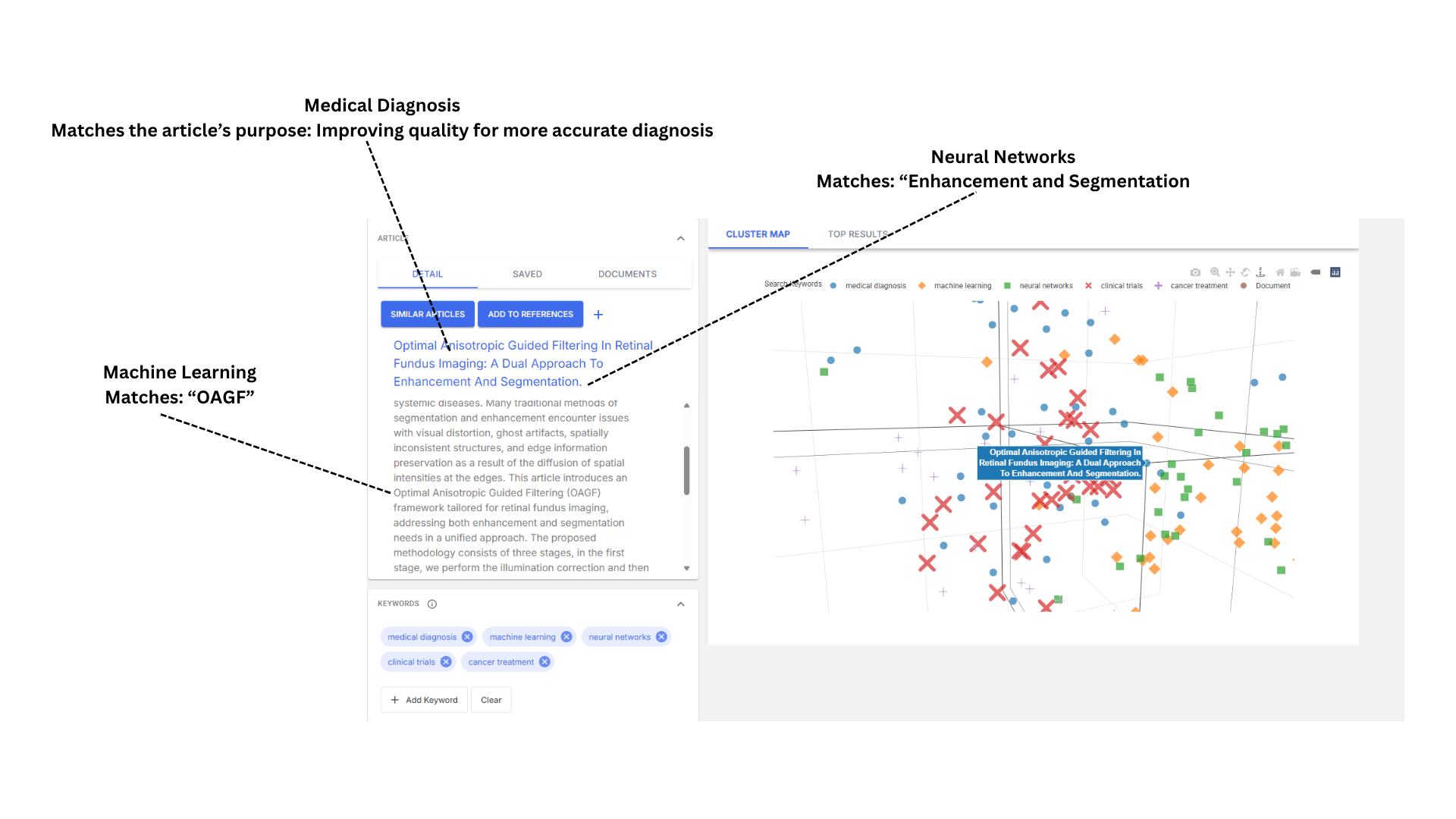
Papers that combine multiple keywords often represent:
- Interdisciplinary innovations
- Methodological advances
- Applied research opportunities
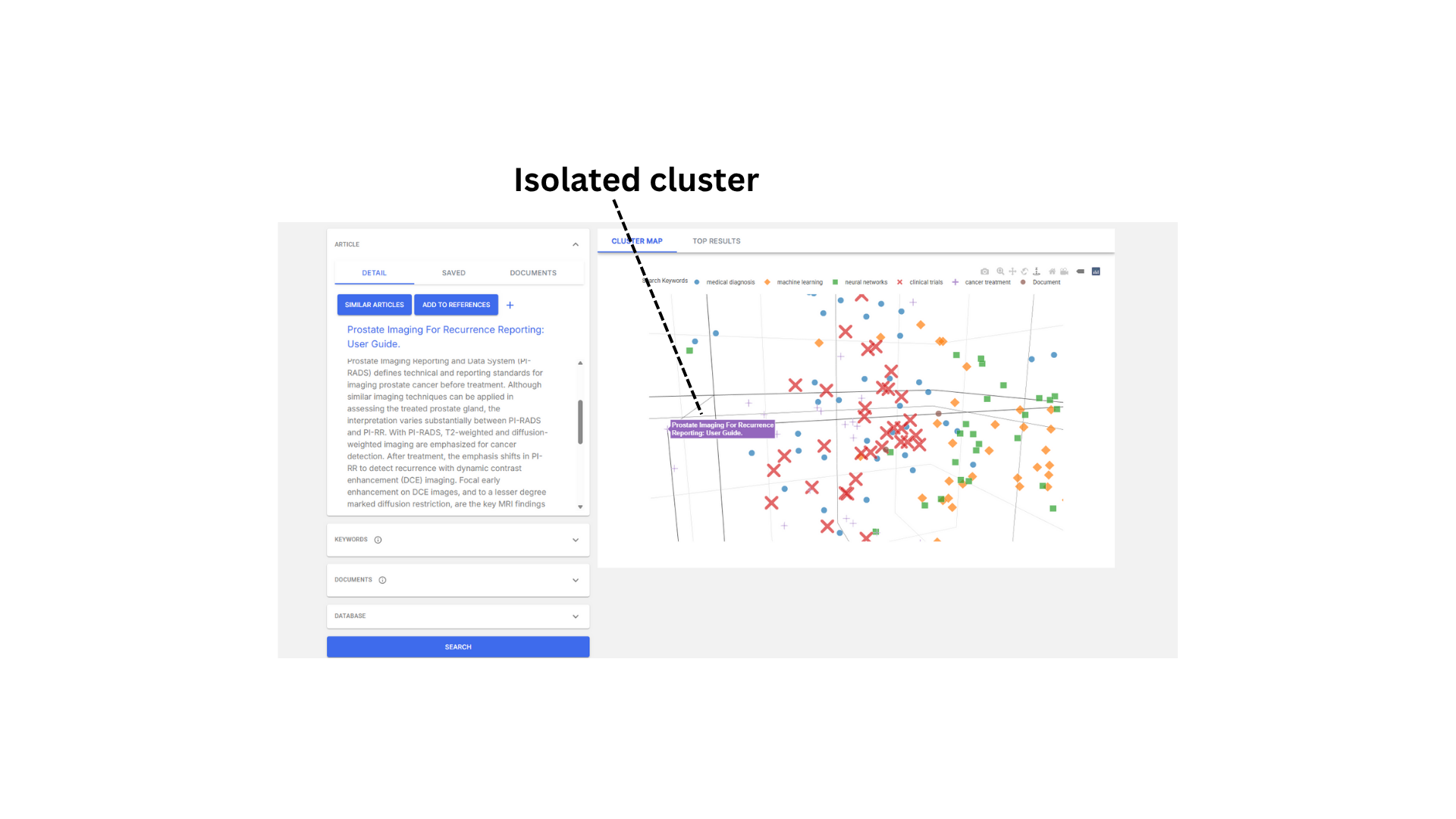
Isolated Keywords (Caution)
- May indicate niche or declining research areas
- Could suggest keyword selection issues
- Might reveal unexplored connections worth investigating
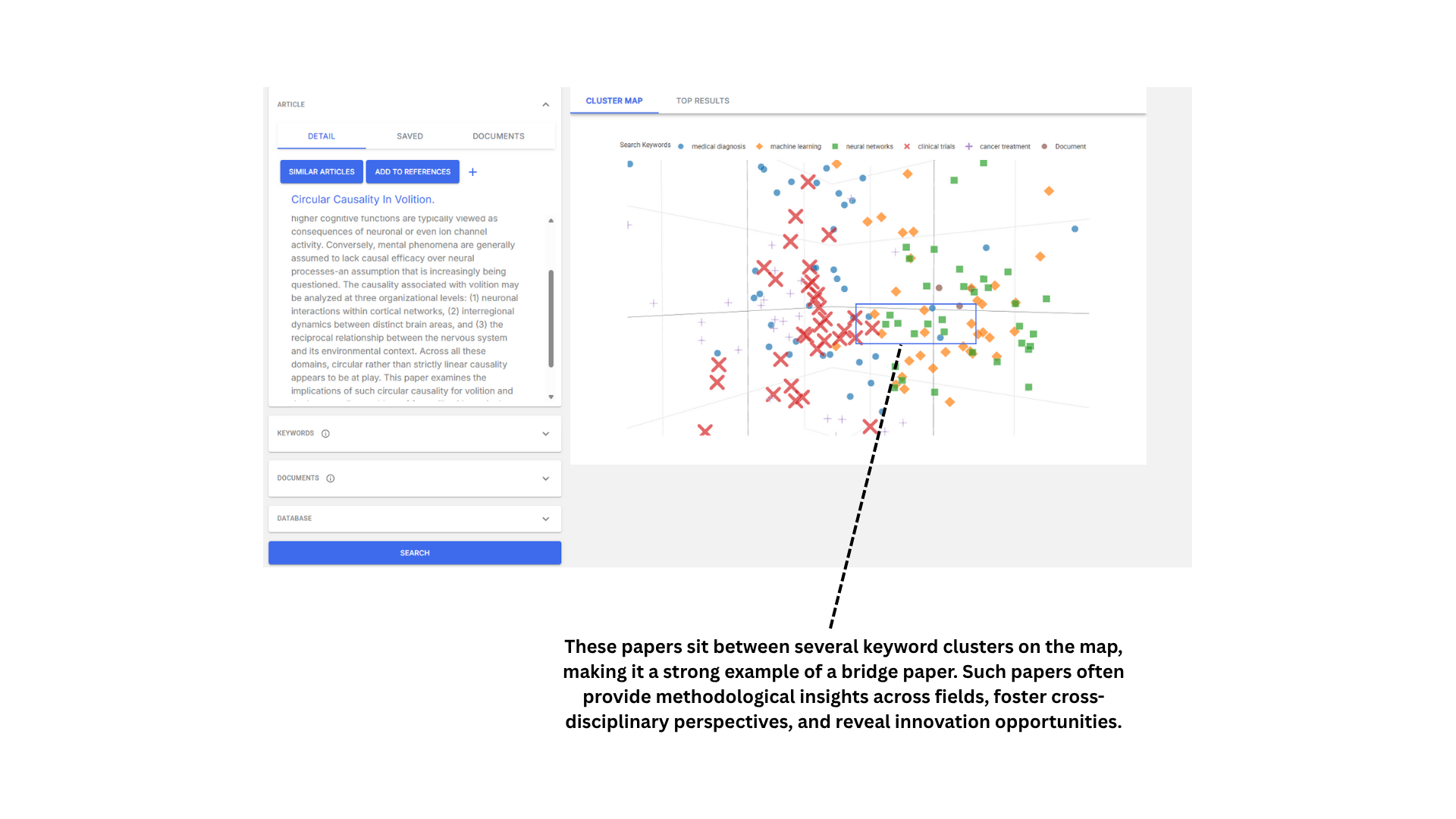
Bridge Papers (Goldmine) Papers positioned between major clusters often provide:
- Methodological insights applicable across fields
- Cross-disciplinary perspectives
- Innovation opportunities
Quality Assessment Through Clustering
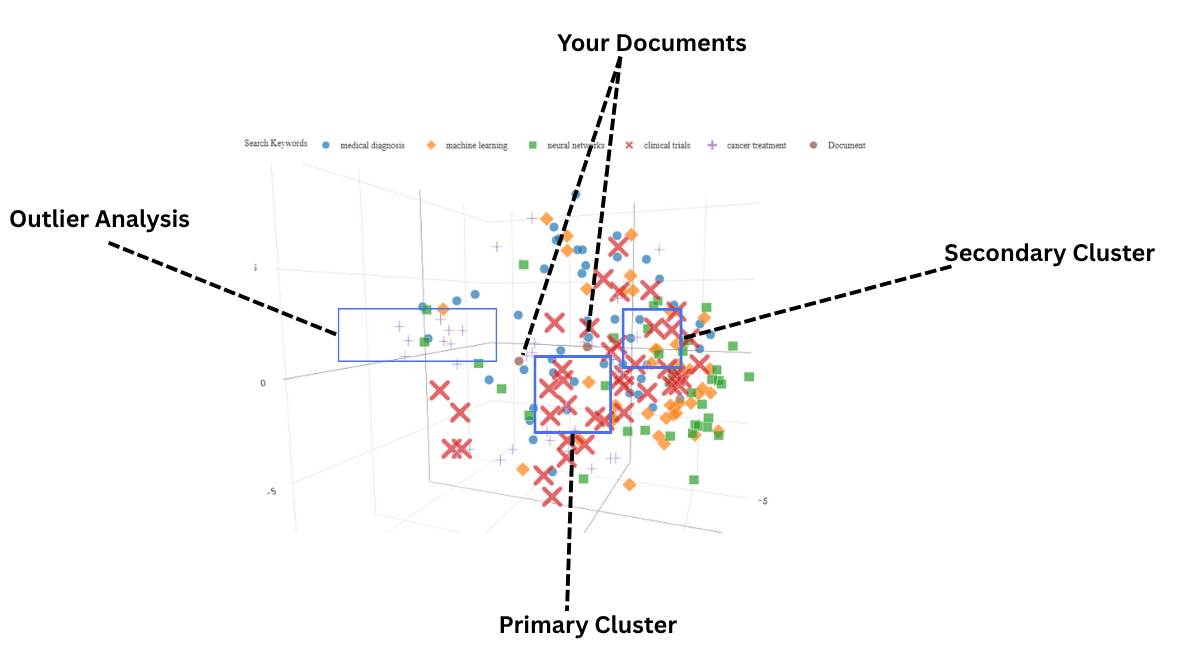
**Relevance Indicators
Primary Cluster Membership
- Papers within your main keyword cluster are typically most relevant
- Core territory for your research foundation
Secondary Cluster Proximity
- Papers near but not within main clusters provide context
- Often contain valuable methodological or theoretical insights
Outlier Analysis
- Distant papers may be irrelevant OR represent breakthrough perspectives
- Always investigate a few outliers for unexpected insights
Research Gap Identification
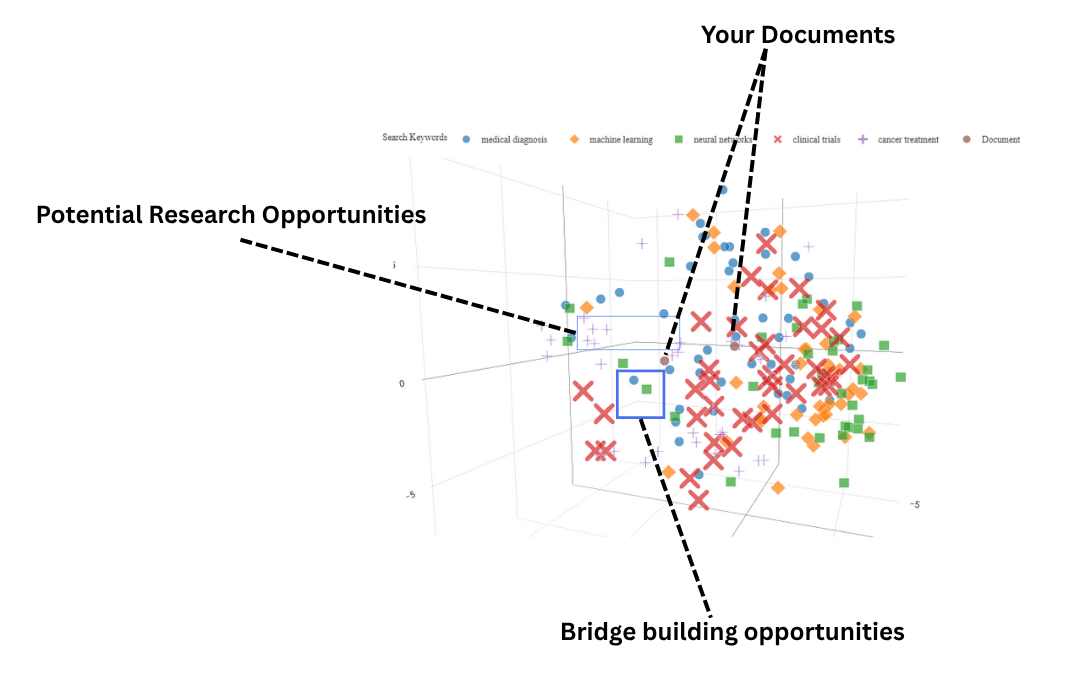
Empty Spaces Between Clusters
- Potential research opportunities
- Unexplored connections between established fields
- Areas for innovative interdisciplinary work
Thin Connections
- Research areas that should be related but show weak literature connections
- Opportunities for bridge-building research
- Potential for high-impact contributions
Advanced Cluster Analysis Techniques
Pattern Recognition
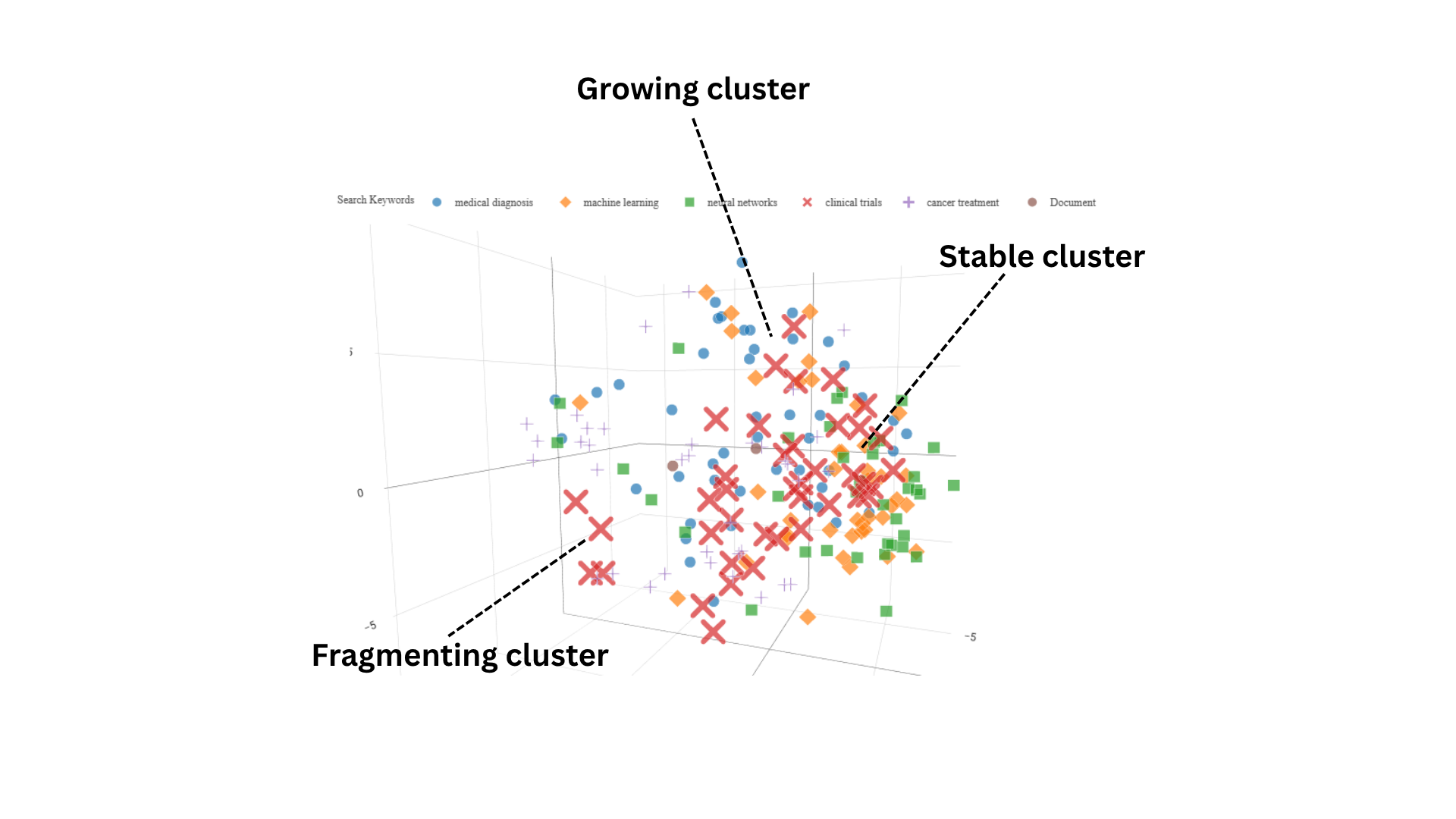
Research Trend Identification
Growing Clusters
- Areas where recent papers dominate the cluster
- Emerging topics gaining research attention
- Opportunities for timely contributions
Stable Clusters
- Balanced mix of foundational and recent work
- Mature research areas with steady progress
- Good foundation for incremental advances
Fragmenting Clusters
- Areas where research is becoming more specialized
- Opportunities for unifying frameworks or comprehensive reviews
Research Strategy Development
Positioning Analysis
Blue Ocean Identification
- Sparse regions with clear research rationale
- Areas where your expertise uniquely qualifies you to contribute
- Opportunities for first-mover advantage
Red Ocean Assessment
- Highly competitive areas with dense clustering
- Requires exceptional innovation or superior execution
- Consider methodological differentiation or niche applications
Collaboration Opportunity Mapping
Bridge Position Targeting
- Papers that connect your research area to adjacent fields
- Authors who might be ideal collaboration partners
- Institutions with complementary research strengths
Troubleshooting Common Discovery Challenges
When Results Don’t Match Expectations
Missing Key Papers
Diagnosis: Important papers you know should appear aren’t in results
Solutions:
- Add key terms from missing papers as additional keywords
- Upload missing papers directly to see their cluster position
- Check if papers use different terminology than your keywords
Overly Scattered Results
Diagnosis: Cluster map shows no clear patterns or groupings
Solutions:
- Reduce keyword diversity - you may be spanning too many fields
- Focus on either methodological OR application keywords, not both
- Consider separate searches for different aspects of your research
No Surprising Discoveries
Diagnosis: Results only confirm what you already know
Solutions:
- Add broader or more general keywords to expand scope
- Try methodological keywords from adjacent fields
- Upload papers from related disciplines to explore cross-connections
Optimizing Search Performance
Keyword Selection Best Practices
- Test keyword variants: “machine learning” vs. “ML” vs. “artificial intelligence”
- Include domain-specific terminology: Technical terms used in your field
- Add methodological keywords: Research approaches and analytical methods
- Consider temporal keywords: “recent advances”, “emerging”, “novel”
Database Selection Strategy
- Start broad (Google Scholar) for landscape overview
- Go deep (PubMed, ArXiv) for comprehensive domain coverage
- Add specialized databases for niche or recent developments
- Compare across databases to identify coverage gaps or biases
Explore Projects and Organization to learn how to systematically organize your discoveries.